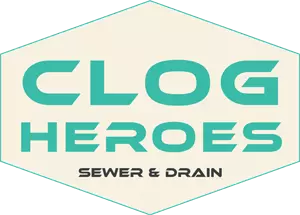Top 10 Common Causes of Clogged Drains
Home /
Clogged drains are a nuisance we’ve all encountered at some point, disrupting the flow of our daily lives and leaving us scrambling for solutions. From minor inconveniences to major plumbing nightmares, understanding the root causes of clogged drains is the first step in preventing them. In this comprehensive guide, we’ll dive deep into the top 10 common culprits behind clogged drains and equip you with actionable tips to keep your pipes flowing freely.

- Hair Build-Up: Hair is one of the primary offenders when it comes to clogged drains, especially in showers and bathroom sinks. As strands of hair accumulate over time, they create a dense barrier that traps other debris, leading to stubborn blockages.
Prevention Tip: Install a drain strainer or hair catcher to prevent hair from entering your drains. Regularly clean these devices to ensure optimal effectiveness.
- Grease and Fat: Pouring grease or fat down the drain may seem harmless at first, but as these substances cool, they solidify and adhere to the walls of your pipes. Over time, this can result in significant blockages that impede water flow.
Prevention Tip: Dispose of cooking grease and fat in a dedicated container and throw it in the trash once solidified. Additionally, use paper towels to wipe greasy cookware before washing them in the sink.
- Food Residue: Food particles, particularly those high in starch and carbohydrates, can easily accumulate in kitchen drains, forming clogs that are difficult to dislodge. Common culprits include rice, pasta, and potato peels.
Prevention Tip: Scrape plates and cookware into the trash before rinsing them in the sink. Consider using a compost bin for food scraps to minimize waste while keeping your drains clear.
- Soap Scum: While soap is essential for personal hygiene, the residue it leaves behind can wreak havoc on your drains. Soap scum combines with mineral deposits in the water to form a sticky substance that adheres to pipe walls.
Prevention Tip: Switch to liquid soap, which tends to leave less residue than bar soap. Periodically flush your drains with hot water to help dissolve soap build-up.
- Foreign Objects: Accidentally dropping items like jewelry, bottle caps, or children’s toys down the drain can lead to blockages, especially in bathroom sinks and tubs.
Prevention Tip: Be mindful of what you’re placing near your drains, and use drain covers or stoppers to prevent small objects from slipping through.
- Tree Roots: In outdoor plumbing systems, tree roots can infiltrate pipes in search of water, causing significant blockages and even pipe damage over time.
Prevention Tip: Regularly inspect your outdoor plumbing for signs of root intrusion, such as slow drainage or sewage backups. Consider planting trees and shrubs away from your sewer lines to minimize the risk.
- Mineral Build-Up: Hard water contains high levels of minerals like calcium and magnesium, which can accumulate inside pipes and restrict water flow.
Prevention Tip: Install a water softener to reduce mineral deposits in your plumbing system. Periodically flush your drains with a vinegar solution to dissolve existing build-up.
- Toilet Paper Build-Up: While toilet paper is designed to break down in water, excessive use or flushing of non-flushable items, like wipes (even if they are “flushable”) can result in toilet paper blockages.
Prevention Tip: Use toilet paper sparingly and avoid flushing items like paper towels, feminine hygiene products, or wipes, which can contribute to clogs.
- Aging Pipes: Over time, pipes can deteriorate, corrode, or collapse, leading to obstructions and leaks.
Prevention Tip: Schedule regular inspections of your plumbing system by a qualified professional. Consider replacing outdated pipes with more durable materials to prevent future issues.
- Poor Drain Maintenance: Neglecting regular drain maintenance can exacerbate existing issues and increase the likelihood of clogs.
Prevention Tip: Implement a routine maintenance schedule that includes flushing drains with hot water, using enzyme-based cleaners to break down organic matter, and scheduling professional inspections as needed.
By familiarizing yourself with the top 10 common causes of clogged drains and implementing proactive prevention strategies, you can minimize the likelihood of encountering plumbing headaches in the future. Remember, a little prevention today can save you from a major plumbing disaster tomorrow.
Want to Stay Updated on the Adventures of Clog Heroes?
Make sure to follow us on social media! You can find us on Facebook, Instagram, and YouTube.
